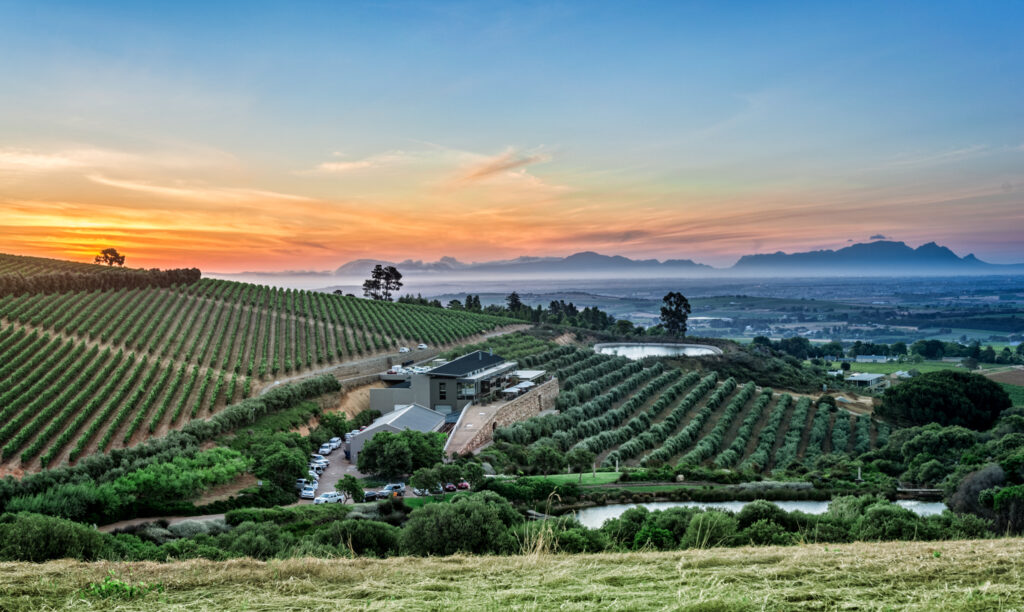South Africa’s wine industry is sitting on an untapped treasure trove worth billions, and the key to unlocking it lies in transforming wine tourism into the country’s premier attraction.
Banking expert Daneel Rossouw, Head of Sales for Agriculture at Nedbank Commercial Banking, believes South Africa’s wine industry is perfectly positioned to reach unprecedented heights by making wine tourism its flagship offering.
“South Africa’s wine industry is in an outstanding position to reach new heights by making wine tourism its superstar attraction,” argues Rossouw.
What South African wine tourism offers is nothing short of extraordinary. With 522 wine cellars spread across 23 wine routes in the Western Cape, Northern Cape, and KwaZulu-Natal, the country delivers a rich and easily accessible wine experience that rivals the world’s best.
The United Nations World Tourism Organization (UNWTO) recognises South Africa as one of only two principal wine tourism destinations worldwide, alongside California’s celebrated Napa Valley. These locations offer exceptional experiences that connect travellers with local history and tradition while providing world-class gastronomy and comprehensive tourist information.
South African wineries serve up internationally acclaimed wines paired with exceptional cuisine, captivating stories, and the warm hospitality the country is famous for – all at prices that won’t break the bank by international standards.
The numbers tell an impressive story
The financial impact of wine tourism is already substantial and growing rapidly. According to 2022 research by South Africa Wine, wine tourism contributed an impressive R9.3 billion to the country’s GDP, represented 17.3% of total winery turnover, and provided employment for up to 40,000 people depending on the season.
For an industry traditionally built on tight margins, wine tourism offers much-needed income and superior profitability. The smaller operations benefit most significantly:
Micro wine cellars (generating less than R10 million annually) derived 36% of their total turnover from wine tourism activities
Small cellars (R10-50 million) generated 35% of revenue from tourism
Large wineries (R170-300 million) earned 22% of income from wine tourism
Medium cellars (R50-170 million) generated 19% from tourism activities
Significantly, all these contributions have increased considerably since the first wine tourism study in 2019.
 Wine tourism in South Africa has the potential of becoming a billion rand booming business. Credit: Kevin Crause
Wine tourism in South Africa has the potential of becoming a billion rand booming business. Credit: Kevin Crause
Transformation through tourism
Black-owned wineries are becoming increasingly popular wine tourism destinations, offering unique stories and cultural experiences. With 81 black-owned wine farms and 107 black-owned wine brands, there’s substantial scope to contribute to industry transformation while creating a more diverse and inclusive wine tourism landscape.
“Customers don’t remember what you tell them. What they do remember is how you make them feel,” industry experts note.
Successful wine tourism requires strategic investment in experiences that create lasting memories. The 2021 Great Big Wine report by Vintelligence revealed that farm visits and in-person wine tastings were the most effective methods for increasing both the average price paid per bottle and monthly purchase volumes.
Key consumer motivators include: – Special promotions (influencing 72% of consumers) – Special occasions (inspiring 67% of visits)
Missing the golden opportunity
However, many wineries are squandering a golden opportunity by failing to capture visitor information. Too many establishments allow guests to visit, taste, purchase, and leave without collecting contact details – essentially letting potentially high-value customers slip away.
This oversight means wineries miss valuable data and opportunities to build lasting customer relationships. Tools like WiFi analytics and customer relationship management systems can help track visitor behaviour and convert one-time guests into loyal patrons.
The impact is measurable: Beau Constantia reported that just 5% of guests who shared contact details purchased additional bottles at on-site events, generating nearly R275,000 in extra annual revenue.
Local is lekker – The domestic market advantage
While international visitors from the UK, US, and Germany top the foreign tourist lists, domestic tourism forms the backbone of wine tourism. Compelling statistics show:
66% of wine tourists are domestic travellers
37% live within 40 km of the wine cellar they visit
58% of overnight guests are domestic travellers
81% of July overnight guests are domestic tourists
Western Cape residents visit Cape Winelands significantly more frequently than other South Africans, with 61% having visited wine farms more than five times, compared to 27% from other provinces.
The data reveals that wineries don’t need expensive accommodation to capitalise on wine tourism trends. Day trips from Cape Town and surrounding areas remain the most popular visit type, indicating that adding daytime experiences like restaurants, farm stalls, and family-friendly activities can significantly boost visitor numbers and sales.
Investment for future growth
Growing wine tourism requires strategic funding for facility development, staff training, technology adoption, and marketing initiatives. However, this forward-thinking approach enables wineries to connect with current and future customers, build loyalty, and strengthen their brands.
The result? Increased profitability, enhanced resilience, and a foundation for sustained growth across the entire industry.
For South African wine businesses willing to embrace the tourism opportunity, the potential rewards are as rich and complex as the wines they produce.


Dining and Cooking